Tervetuloa! My name is Aaren, and here is my company, Metsami Creations.
Why did you start Metsami Creations?
Christmas Eve 2015 Narrative
Although this Holiday we had a small dinner, didn’t put up a tree, decorate, or visit with friends and relatives, it was still a special Holiday. It is marking the end of a challenging year, and a series of mammoth projects to make a customer happy Christmas Eve. After hundreds of hours to complete the project and restore the means of delivery, I reflect on the accomplishments of this year and on what the next year will hold.
I figure I will tell you the real story about how Metsami Creations came to be. With every interview or media appearance, I am asked “why do you do what you do? I tell them it is because I enjoy art, preserving culture, and making people happy. However, there is much more than that. Far too long of a story to fit in an interview, and far too sensitive for public press. The pivotal moments and situations below will hit close to home for my peers, family, mentors, and associates in the local area, and perhaps abroad.
Well, this is going to be a long story. It was really only recently when I started to uncover my heritage and reawaken the interest of our ancestors culture.
When I was young I didn’t even know anything about Finland or even where it was, just that we were from there. All that came from there were old people, raging alcoholics, gross food, strange music, goofy last names, and Eino and Toivo jokes. Although I was ignorant of the past, who I socialized with may have been an indication of the future.
In school there were several groups. The jocks, rednecks, nerds, and Finns. There were many peers in every group who were Finnish, but the “Finns” group were all Finnish. They were smart, quiet, conservative, and belonged to very large families with funny names. Many of my best friends were in this group. I did fit in well, as I was quiet and I guess you could call “smart” as I was a good drawer and inventor. Although I was an only child, my dad was a Joki, one of the largest families in the area. I don’t know if you could call me “conservative” as all through elementary school I got a detention nearly every few days for being obnoxious. My Finnish friends were kind of strange. I thought some were Asian when I was young. They could never listen to music or watch TV. They never swore. If I had a birthday party somewhere where alcohol was served, they could not go.
I didn’t fit into the other groups in school. I was terrible at sports so I couldn’t hang with the jocks. I did not fit in with the rednecks, as I had no good adult mentors when I was young to teach me outdoor skills such as hunting, fishing, trapping, and farming. I also didn’t fit in with the nerds, as I had a learning disability which prohibited me from keeping up with a normal class. I had to go to psychologist who determined I may have aspergers, or a high functioning form of autism.
Through middle school I began to grow more distant with the Finn group. There was a change but I did not know what it was. I also had issues with my friends in this group due to rumors my family smoked and drank excessively.
Going into high school I was pretty much exiled from the Finn group and had to join the rednecks. I didn’t think too much of it since I had a few other good friends and cousins. From middle school into high school, I had a strong interest in weather. I learned to read the maps from numerical model guidance and predicted snow days, sometimes up to two weeks in advance. I became known as the oracle. My interest in weather data, electronics, and ham radio led me to consider a career as an electrical engineer. However, due to my poor mathematical skills, I doubt it was feasible. I had yet to consider a career in art either, although I was a good artist since I was two. I never thought art could be a realistic career choice. Overall, my future outlook was bleak.
Then everything all changed in 10th grade. There was a new girl on the bus. I never saw her before. She was quiet, but we started to talk. I really liked her. I wrote her notes and asked her to go fishing. She declined and over time just ignored me by reading. I later found out she couldn’t talk to me because she was Laestadian. I knew she liked the outdoors, so to try and impress her I told her I was going to start a business with woodwork, farming, and forestry.
I googled Laestadiansm, and it brought me to a page about the Sami people. Nomadic reindeer herders in northern Scandinavia. Pretty much European Indians. A lot of the people looked Asian, and many looked like my friends, cousins, aunts, and uncles. Many Sami were converted from animism/shamanism to Laestadiansim, a very conservative sect of the Lutheran denomination. It then occurred to me that my friends left me as it became apparent to them that my family did not follow the same customs and faith. Although sharing the same ancestral homeland and social similarities, faith parted our ways.
I never expected Finland to be so amazing. After first researching about the Sami, I began to learn about the Karelians, Forest Finns, and Vikings. I studied the Winter War and the achievements of Simo Hayha, the compositions of the great Jean Sibelius, architecture of Alvar Aalto, and Elias Lonnrot’s epic Kalevala. I listened to the music of the north. The joik of the tundra, folk music of the countryside, classical orchestras, and symphonic death metal concerts heavy with pyrotechnics and inebriated fans. The landscape was pristine. Ragged tundra painted in the rays of midnight sun where reindeer run, icy glass lakes graced with blood red birch, rolling lush green farms and forests, and island speckled seas. This is where my ancestors came from.
I was particularly interested in duodji, the handicraft of the Sami people. It consisted of a lot of very detailed leather, metal, antler, wood, and textile work in utility items, fitting for a people always on the move. The ancient mythology was also fascinating, with noaidi (shaman), pictographs, joik, drums, tales of great beasts, and magic.
My uncle also played a part in my interest of Finnish and Sami culture. When my dad and I would visit for bonfires, we would talk about mythology, crafts, and heritage. My uncle also had a “shaman drum” that we would play around the fire, which was decorated with Sami, Nordic, and Siberian runes and pictographs.
I had gotten a cheap wood burning pen for Christmas when I was younger. At that time my hands were too small for the pen and it got too hot. I decided to dig the pen out again and give the craft a try. I enjoyed it, began burning basic nature scenes for practice, and upgraded to a professional burning unit. I was inspired for my artwork to continue the traditions of my ancestors so they would not be lost.
The farming aspect of Metsami Creations is a rather silly story. I was having a conversation in English class about how bait worm prices keep rising. Being a rather avid fisherman, I got the idea to raise my own worms. Easy right, just dig a hole in the ground, fill with manure and garbage, and you have worms! I quickly discovered the worm farm would produce more compost (castings, worm manure) than worms. It also involved much more work than anticipated. Cribbing was installed to keep sand from falling into the compost, lids built, air vent pipes, heating cables, and eventually forced air heat. Special equipment was also needed to dry and sift the castings. Selling compost helped me make many connections with farmers and artists at markets, an important benefit I had never expected, and has become very important.
In high school I was failing Algebra II. At one point my teacher told me during class “Aaren, you’ll never have what it takes to be an electrical engineer”. I said “Fine, I will be a woodworker instead!”. I failed Algebra and got away with it, and so began my new life path.
That is when I started “Metsami Creations”. Metsami roughly translates to “forested land” in Finnish and Estonian. Although in Finnish, the “a” should have an umlaut, such as Metsämi, however it is difficult in the US to have umlauts in business names and urls. Metsämies means woodsman or huntsman, which is also the name of a song by the Finnish folk metal band Korpiklaani. Metsämies is a song about a grumpy lumber jack, who toiled in and gained sustenance from the forest, while everyone else partied. I liked the word “Metsami” because in English it can be interpreted as met-sami. Since I want to do Sami handicrafts, visitors will have “met” the Sami culture. The stylized MC logo have meanings in each letter. The first half of the M is a spruce tree with the Finnish flag, symbolizing forestry and Finland. The Lavvu or tipi like design in the second half of the M symbolizes Sami and indigenous culture. The pictographs in the C symbolize ancient mythology.
In my Senior year I took independent study in art, and although not technically allowed, I took my work to school. I was making artwork to sell in class, making money going to school. Finnfest 2013 was coming up in Hancock, during the midsummer solstice week, and I was in a hurry to complete several large pieces to bring to the event, which was only weeks after graduation. Since I did not have any academic classes, I did art after all shop work was finished, which could be a good chunk of the day.
I was in a construction trades class, and you had to drive to the job site. I did not have a car, since I was saving money to buy a m35a2 cargo truck. Everyone seemed to think I was crazy. I anticipated in a few years I would have to haul quite a bit of product and materials, so a small pickup truck wouldn’t cut it. Construction trades was right after art, and students would leave early. I guess I didn’t really have any good friends, because nobody seemed to want to wait to leave for class at the proper time. I’d get left behind, but I did not care. It was more time to work.
I had just completed a large pyrograph of Finland, complete with picture collages depicting scenes and people, and each large city depicted with caricatures of their most notable structures and monuments. Countless hours of research, tooling, and a virtual tour of a foreign to me land led up to the unveiling of the masterpiece. Had I not missed construction trades, I may not have been able to deliver the piece in time.
Finnfest was life changing. I did not have a booth in the Tori at Finnfest, so I had my neighbor display the artwork at her jewelry table. It was enjoyed by local, foreign, young, and old alike. I made many connections at the event, and learned a lot while frequenting the various presentations and workshops. The first evening of the Finnfest, my cousin and I somehow got in to watch the opening ceremony. We were pretty sure you needed tickets bought ahead by the time we got in line, and in the confusion we just showed an old woman at the gate our name tags and she let us in. Although the opening ceremony was special, it did not compare to the magic of midsummer night.
On an endless strand of sand and gravel, separating the cold waters of Gitche-Gumee from the vast wilderness of the northwest copper range, people gathered for Midsummer Eve. The preceding week of dreariness, a northern rain forest experience, gave way to the calm balmy evening. A large kokko (bonfire) was lit on Misery Beach. The Sami Jienat choir, whos members with their colorful regalia and musical styles represented various regions throughout Sapmi, stunned the crowd with joiks, song, and tales of the north land. As the golden sun set behind a gray cloud bank, the flat summer waters and sky merged into a still foggy greyness. Musicians played their accordions and fiddles in the red flickering glow of the dying blaze, while quiet joiks and conversations in languages long forgotten heard among the dunes.
The magical midsummer night was the culmination of the weekend, and in the aftermath it left me thinking: “The culture of our ancestors is beautiful. We can not afford to loose it. The United States is made up of many different cultures, and younger generations are loosing the connections to their roots. I want to do my part to save mine, and hopefully serve as an example for others to do the same.”
The response to the art’s U.P, Finnish, and Sami theme was incredible, and business began to pick up. I was collecting more equipment and on the path to begin building a successful woodworking company. Not only did I want to preserve my culture and build a business, I also wanted to gain fame and respect, and perhaps the heart of the girl I liked.
In my journey of art I found I was making folks happy and was meeting new interesting people all the time. What I started just kept snowballing and the adventure continues, with new opportunities arising all the time. Earlier this year I had planned to travel the U.P to sell art in the military truck, however that all changed when I was given the opportunity to have a showroom location at a store in downtown Marquette. Coincidentally, the latest development is the opportunity to help manage a farming and forestry operation, and to move my company there to expand in the future. Who would have ever known the joke I made to a girl four years ago could actually be the future.
Preserving culture will take more than just woodwork, even though forestry and woodwork are big Finnish traditions. I will need to to learn Finnish and Sami. I will need to get more proficient at fishing, hunting, and perhaps trapping. I will also have to learn new skills involving duodji, wood carving, leather work, metal, and jewelry. My hope is that in the future I can teach these skills to younger generations so that they are not lost.
As you can imagine, faith is also a big part of my interest in Sami and Finnish culture. I found it is beneficial to success to be conservative, to avoid the vices of alcohol and drugs, violent music, and poor relationships. Although I consider myself a conservative Christian, I also have to acknowledge our ancestors lived perfectly fine under the spiritual guidance of elders and noaidi before the tribes were crushed by zealotic missionaries and the tax collectors of Kings. Did God’s grace not extend to our ancestors before the herald? Sami culture is undergoing a change were conservative christian values can still be embraced alongside the old animist ways of our ancestors. This philosophy of theological flexibility would greatly benefit the world and perhaps solidify spiritual validity in ancient indigenous cultures and decrease persecution.
I hope this narrative serves as an inspiration and lesson. Inspiration to keep your heritage alive, hold your colors, work hard, and rise from zero to hero in the face of difficulty, judgment, and loneliness. A lesson to not underestimate potential, and that your actions towards others may have significant ramifications in the future, for good and for bad. This is the real story of how Metsami Creations came to be.
Buorre Beaivi ja Jumala Terve!
The Construction Story
I began developing my business in early 2012. As a good artist, I was looking to make a career out of my skills. Drawing on paper was boring and common, and painting was too messy and difficult to control. I got the idea to try pyrography, also known as woodburning. Pyrography is Greek word that means writing with fire. I got a cheap soldering iron type pen for Christmas, and did my first wood burning of a humming bird for my grandparents. Although the quality of my first finished piece was exceptable, I found the pen to be too hot and difficult to hold, so I quit for awhile.
Back in late 2011 while drawing a brook trout on paper, I figured I would try to transfer the drawing to a board and give wood burning another try. The results turned out good. I found pyrography to be easier and after each project my skills increased, until I needed to upgrade my equipment. I upgraded to a dual pen, temperature controlled Nibsburner. Since my artwork was smoking up the house I decided that I needed a studio. The garage had two rooms, one was an old shop full of junk, and the other room contained a unused hot tub with a massive picture window. We got the idea to build a floor over the hot tub, and created a loft level with the picture window.
- Nibsburner
- Hot Tub Floor
- Studio Beginning!
In 2012 my resources available to due woodwork were pretty limited. Just had a few hand tools and a table saw, until my dad bought a trailer full mismatched woodworking and automotive tools from my uncle. I could finally start to build basic items, such as cribbage boards, cutting boards, and birch log picture frames. That was a start, but I needed more equipment. I decided I would spend the few thousand dollars I had made from art on all the equipment needed to create custom furniture and mill my own lumber. I also began the process of gutting the old workshop and cleaning it up to build a functional woodshop.
- Start of the Workshop
- Birdseye U.P Cribbage Boards
- Deer on Table Top
Through 2012 and 2013 I created several wood burning’s of great detail, large and small. Notably, a map of Upper Michigan, a map of Finland, the Edmund Fitzgerald, and various other projects. It wasn’t long before I discovered that I could make a career out of my skills after selling my first large project in 2012. I noticed a trend in my commissioned projects, and it consisted of a mix between pyrography and traditional woodwork. I began to build cribbage boards, cutting boards, and wood burnings on table tops. Interestingly, my first customers were students at my high school, which I found odd. What person my age wants to spend money on art?!
Due to the amount of work needed to expand my woodworking business and the fact I had no idea what I was doing and learning on the go, I needed to develop another source of income. It was in summer of 2012 when I was having a fishing conversation with my friend about the cost of worms. I then thought “why don’t I just raise worms in manure from local farms?” Over the summer I started drawing up plans for a worm farm, consisting of four 8x4ft boxes buried a foot deep into the ground, including ventilation and heating pipes. I figured if well taken care of I could raise 128,000 worms a year. To harvest worms I also bought a fanning mill originally used for cleaning grain. I quickly realized that is a lot of worms to sort and sell, and I calculated I would burn through nearly 11 tons of manure a year! Luckily, I learned the waste excrement of the worms, also known as vermicompost or castings, was worth more than the worms themselves, at one to three dollars per pound!
- Fanning Mill
- Digging holes and clearing debris
- Garden built from soil and railroad ties
- Inside worm bin
- Two worm bins with lids
- Manure pile for worms
In the winter of 2012 and 2013 I began to acquire all the woodworking equipment I needed to produce rustic furniture. I calculated I would need several thousand dollars worth of woodwork equipment, and I did not have enough funds available. Thankfully my dad and I were able to locate an old Shopsmith with most accessories, including a planer and joiner, for a great price. I had enough funds leftover to purchase mortise and tennon cutters for rustic furniture, a large drill to run the tennon cutters, various hand held power tools, and a Alaskan chainsaw mill to cut my own lumber.
- Shopsmith
- Office is making progress!
In early 2013, I heard Finnfest would be hosted in Houghton in June, at the time of the traditional Finnish midsummer. My neighbors who make jewelry gave me the opportunity to display some of my artwork at their booth, since it was too short notice for me to register for a spot in the Tori market. I also did not have enough inventory. In fact, in early 2013 I had no art ready for Finnfest at all! Through winter and spring I build my first Kantele, complete with pyrography depicting scenes from the Finnish Kalevala. It was the first project I build on the Shopsmith in the unfinished workshop.
I also worked on research for my next large wood burning, which was a map of Finland, depicting the notable buildings and landmarks in each city, and a picture collage of Finland’s greatest monuments and people surrounding the map. I also worked on a improved duplicate of my original Upper Michigan map, which I finished just in time for the Finnfest. I did a lot of my artwork in school to save time, in the back closet of the art room to isolate the smoke from other students. Since it was my senior year I had a lot of much needed spare time.
- U.P Map
- Finland Map
- Sami Pictographs
Although I did not sell much art at Finfest, I did make a lot of great connections, in addition to learning more about the culture of my Finnish ancestors. I was up in Houghton and Hancock for a full seven days. In that time I met numerous people, went to several concerts, ate a lot of good food, and got to watch the opening ceremony! A full week of culture, workshops, crafts, concerts, joiks, polkas, and bonfires was something to remember!
- Showing a choir member of Sami Jienat my art.
- Midsummer Kokko
- Jam Session on Agate Beach
After the fun at Finfest, I realized I had a major issue. The wood I needed for my projects was in short supply. I needed live edge white pine slabs, tree cookies, cedar logs, and cedar stumps. These materials sold locally were expensive, as large pine slabs were more difficult for sawmills to cut, and cedar is not common in this area. I would have to acquire these materials myself. It would involve milling logs myself and traveling south where cedar is more plentiful. I now needed to find a heavy truck to haul lumber and pull stumps.
My dad and I ended up making a 300 mile trip to western Wisconsin to buy a 1971 M35A2 2.5ton cargo truck, also known as a Deuce and a Half. It was the cheapest truck available with a large bed and a winch, and a new engine to boot. The truck ran great, but I had to learn how to drive it! I have never operated a manual transmission, let alone a 13,000lb cargo truck without power steering and single circuit brakes that could fail anytime. This is not the first time I was operating dangerous machinery with little experience, as you will see below.
I found “learning quick” to be necessary in my endeavors. I got my first professional chainsaw in the spring of 2013 for use in my sawmill. It was a Husqvarna 394xp with a 36 inch bar. I have never operated any saw larger than a poulan with a 18 inch bar. A heavy saw with well over double the displacement and power took awhile to get used to, but eventually I was milling lumber and didn’t lose any limbs.
I realized I also had a major issue with the fresh lumber I cut. It has to dry to the proper moisture content before it can be worked with. A four inch thick pine slab will take almost four years to properly air dry outdoors, and in that time cracking along with insect infestation is likely. I want my wood and I need it NOW! I had to figure out a way to dry it. I would need a wood kiln. Unbelievably, my friend happened to have all the insulated walls, door, and ceiling needed to build a 8x15ft walk in freezer. I figured I could build a wood kiln out of it, so I bought it and hauled home my first load of “junk” in the Deuce. Over the Summer and Fall I cut all the foam and aluminum panels to size and framed out a insulated floor, and before winter set in I had a completed insulated building. I also installed a old woodstove with a blower to circulate hot air, along with heat vents to the worm farm to recycle waste heat.
- Unfinished kiln photo from October. It is done now.
- Kiln Wall Panels
- Wet Boards
Over the winter of 2013-2014 I found that the kiln worked very good, in fact nearly too good. The combination of high temperatures, air movement, and low humidity dried the slabs very fast, to the point where they began to crack. The thick 3 to 4 inch slabs take several weeks of heat to dry, while smaller slabs and standard lumber may take a week or two. The kiln also does a great job of drying worm castings so they don’t stick together when sifting. A process of natural drying which typically took a week can nearly be completed in a day.
The heat vents to the worm farm also saved my composting operation from freezing in our near record cold winter. The electric heating cable was failing to keep the bins warm, with ice slowly creeping in. By running 100 degree air through the ducts in the bins while the kiln was running, and leaving the electric heater on when the kiln was shut down, I was able to push back the ice. The worm bins also acted as a giant condenser, as the ducting returned to the kiln for the air to be reheated once it cooled. This helped lower the humidity.
Due to the record cold, I had to suspend operations in my workshop and office until Spring 2014. I used the downtime to take care of some maintenance issues on the military truck. I installed a cab heater, block heater, and new batteries to improve winter use. Ironically, I did most of the work outdoors when temperatures were near 0F. I also pulled out the radiator to be tested for a leak, however it turned out the leak was from a loose hose clamp.
I was unable to create any new art or wood work in early 2014, but fortunately I had leftover artwork from 2013. This was important, because on Memorial Day weekend 2014 I attended the first ever Mining The Arts festival at Munsing park in Republic, MI. The art show had a surprising turn out for a small town, with many visitors and vendors selling interesting crafts and foods. The weather couldn’t have been better either. It was our hottest weekend of 2014. My artwork got nice exposure and I sold out of most of my smaller wood burnings and antler jewelry. Visitors really enjoyed the Yooper, Finnish, and Saami themes incorporated into the artwork and the day was filled with many conversations about history and ancestry. I had also brought the M35A2 and parked it alongside the booth. It was very fitting for Memorial Day and many veterans enjoyed looking at and talking about their experiences with these iconic American olive drab machines.
During the weekend of the summer Solstice, I also attended the Scandinavian Midsummer Festival at Presque Isle in Marquette. Although the weather was gray, cold, and windy, that did not stop people from visiting. My artwork got a bit more exposure and I also scored a interview with the mining Journal. My artwork also made a brief appearance on the local news. A day of Scandinavian crafts, music, and dance was topped off with a traditional kokko, or bonfire.
Over the summer I also frequented the Negaunee farmers market on Wednesday evenings. The market has a great selection of produce, food, and craft vendors. Many come to shop and visit and it has good visibility from the highway. I made many friends and connections there over the Summer.
The last major event I attended was Finn Fun Day at Negaunee township hall during August. In addition to art, I also brought along some of the interesting tools I use in my trade. I also gave a speech about my craft which was my first public speaking event, and of course without a script. I missed nearly half of Finn Fun Day due to torrential rainfall hampering vehicle loading efforts coupled with repairing a flat tire.
In addition to art shows, I spent a lot of time over the summer collecting lumber for future projects. I traveled around the north central U.P with the M35A2 to pull cedar stumps, collect cedar logs, mill lumber, and haul lumber. I pulled cedar stumps in mucky clear cuts, milled three foot diameter white pine logs in residential neighborhoods with my chainsaw, a hiked into the woods hauling gear by hand to recover and mill cedar logs left behind in slash piles. I also helped operate a bandsaw mill to process 60 white pine logs into lumber, along with doing some wood cutting at Pine Crest resort in exchange for some of the lumber.
I also spent a lot of time over the Summer and Fall to prepare my operation for winter. I cut firewood, organized wood piles, buried the worm farm heat ducts underground, and installed a wood stove in the workshop. My efforts have payed off, as I can continue my work despite record snow and cold.
Now it is 2015, and everything is nearly up and running. I have a lot of custom projects to do along with more cool art in the works. My plan for this year is ambitious, and that is to travel to art shows across the Upper Peninsula in my M35A2 deuce and a half. I also am trying to get more into traditional Finnish and Sami crafts, such as kuksa carving, drum making, antler jewelry, kanteles, and jouhikos. These trades are nearly lost locally, so I will have to learn as I go. I hope to be able to share my adventures in my blog.
Until then, nakemiin ja jumalat rauha!






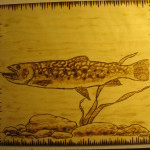
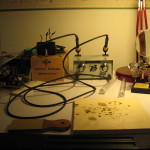

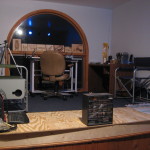
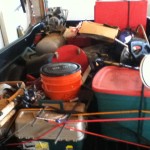
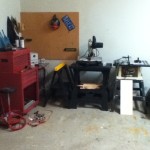
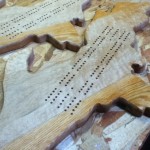
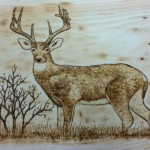
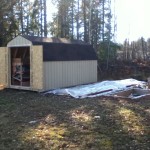
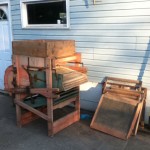
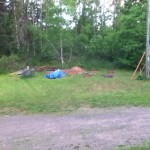
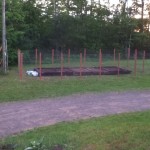
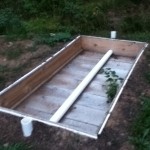

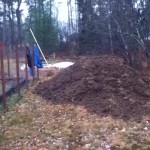

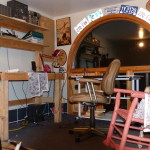
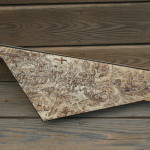

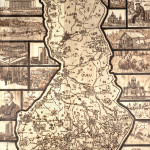
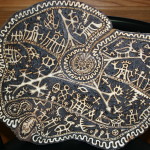
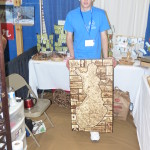
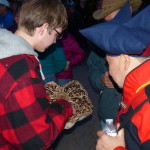
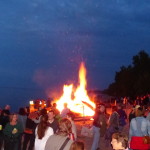
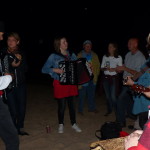
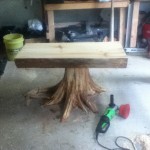
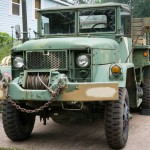
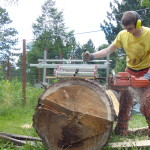
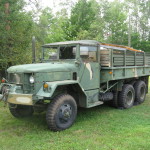
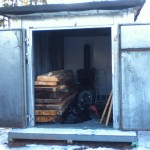
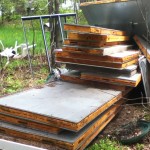
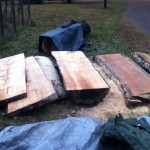
tri city carvers meets each Wed at the Neg. Ice arena at 9am to noon and would like you talk to us or demonstrate some of your techniques. Let me know if you can make it?
Hi Aaren,
I saw your article in the Daily Press. I’m contacting you to see if you might be interested in demonstrating/selling at the U.P. Steam and Gas Village in Escanaba (on the Fairgrounds) during one of our events. You can contact me via e-mail or call at 906-241-0879.
Hi Aaren – I saw your work at Hiawatha today and asked you about making a necklace – and you were doing it but I had to leave very suddenly so could not pick it up! Is there anyway to still get it! You have wonderful work.
Hi there. I am and desperate need of someone to burn some address name and coordinates into Barnwood that I have. Would you be able to help me out with us? I would need it by Monday night. Please let me know. By the way I literally almost bought one of your pieces at the flying moose and I came on your site and I couldn’t believe it was you that made it. So awesome. Let me know thanks!
I have an Amish friend here in MS looking to buy a crate of cedar stumps, do you ship stumps that are flattened on bottom already